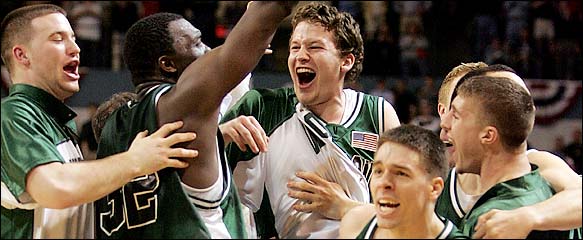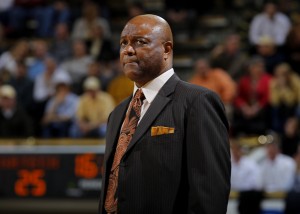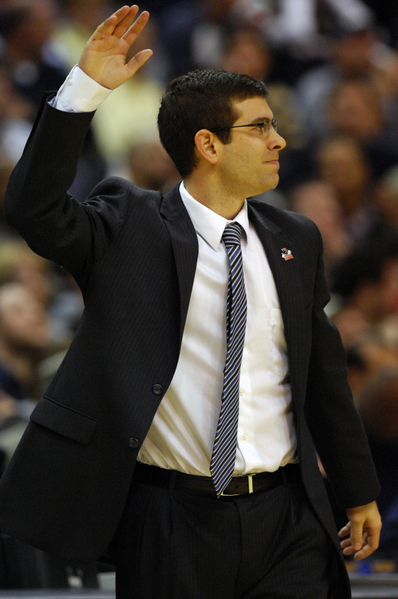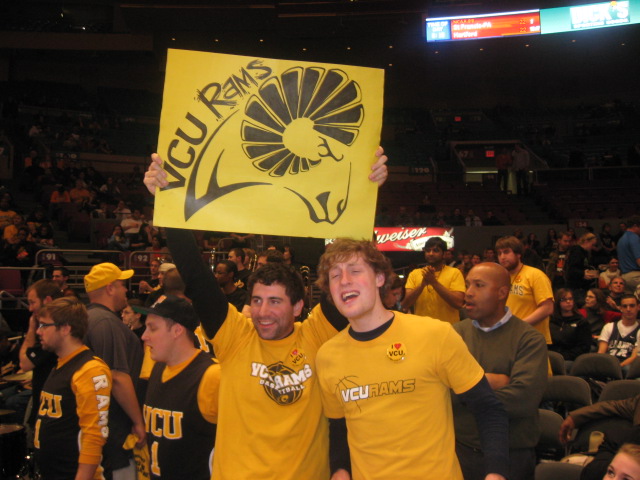
Rush The Court is back with another edition of One on One: An Interview Series, which we will bring you periodically throughout the year. If you have any specific interview requests or want us to interview you, shoot us an email at rushthecourt@yahoo.com.
Yesterday we brought you Part I of our One on One interview with the always-entertaining Tom Brennan. In addition to learning that integration helped knock him out of a starting spot at Georgia and that his athletic director at Yale all but pushed him out the door to Vermont, we re-discovered that the man simply loves to tell stories. Whether it involves him telling his new boss that he’s already fulfilled all his career goals or thinking he had coaching all figured out at the tender age of 27, he had us riveted to each and every word. Part II is only better.
Ed. Note: Brennan uses some colorful language during this interview, so if you’re sensitive to such things, you may want to skip past this one.
Rush the Court: Guys like us who study the sport knew you were pretty good in ’03 and ’04, but most of America, though, didn’t know about you guys until that ’05 season. The ESPN program helped with that, but then of course the NCAA Tournament run built upon it. You guys really caught lightning in a bottle in terms of national coverage, and with Taylor Coppenrath, TJ Sorrentine, and yourself, you all became national names almost overnight. What was that like?
Tom Brennan: We were pretty. We really were pretty. I had this radio show every morning during morning drive-time. It was like something out of a novel. Sorrentine was the little street kid from Pawtucket [RI], you know, who was the leader and had his hat on sideways. And Coppenrath was like Lil’ Abner; he was from a town of 200 people, and they loved him. They loved him! He never complained; he was really a treat. And then I had three or four other guys that just really blended in. I always say this — like, David Hehn — the first year we won [in 2003], we won at BU, and he made a jumper with about five seconds to go to win the game. So now, it’s Vermont’s first championship, we win it on the road. Everybody’s nuts, but then we had Coppenrath and Sorrentine. You know, Sorrentine was out that year, and he’s coming back and he’d been the MVP. And the year he was out, Coppenrath was the MVP. So now I got these two studs, and they’re both really good, but I also have to manage all this sh– to make sure everybody is on the same page. Like Hehn went from a superhero to A Chorus Line — he went back, “just let me guard the other team’s best player.” But if any of those kids had ego problems, I think we could have blown up. They were just so good about it, and everybody really was into the idea that we’re all better if we’re together, and we’re all better if we don’t care who gets the credit and that kind of stuff. As cliched as it sounds, it really was the truth. Coppenrath and Sorrentine were both ultimate teammates, and the other three guys were as well. And we were tough! We’d been around — all the same guys — for three years, then ESPN got interested. ESPN The Magazine did a big story on us, and Sports Illustrated. It was off the hook, and it’s such a little state and we’re the only Division I school, and people just went crazy about it. Really, those guys were like the Beatles — they really were.

The Vermont Rock Stars Knowns as Brennan's Catamounts (Getty/J. McIsaac)
RTC: So let me ask you about those three NCAA Tournaments. In succession, you went up against Lute Olson, Jim Calhoun, Jim Boeheim and Tom Izzo. [laughter] There’s no break there, right? What was that like? Olson’s now retired — he coached until he was about 150, but these other guys continue to get it done even as they advance well into their coaching careers. What is it about these coaches that makes them so successful?
TB: I always said, “if God had another son, he would look like Lute Olson.” It was remarkable what Calhoun did last year — he finished ninth in their league! And it’s not like he’s going to rally them — he’s a bad-ass. You know, he gets in those kids’ faces; he doesn’t take no for an answer. I mean, he’s just ruthless, and yet, man, they did it. They did it. I was always impressed with that, and what happened was… it was funny. I was so in awe of Lute Olson — it was just unbelievable, because, again, the guy was like a god to me — and I didn’t know him, but I just knew of him, and what he’d done and what he’d accomplished and how he looked and he was always so gracious. And so I’m walking down, we’re getting ready to play them, and what happened was that his wife had died a while back, and then he ended up with this woman from Pennsylvania [Christine Olson] — I don’t even know how the hell it happened, but she was like a Republican leader, some big deal from Pennsylvania — and I read this thing where he was very happy. That he’d met this woman and she’d really made him happy, so I didn’t think much of it, but when I was walking down to say hello to him, I was so nervous. Honest to God, I wasn’t even nervous about the game, I was nervous about him! Because I knew, they’re a #1, we’re a #16 — I mean, they had [Andre] Iguodala, they had all kinds of players on that team. We had been stuck in the snow, we didn’t get to Salt Lake until 1:30 in the morning, and we played at 11. It was crazy. It was just crazy. Our kids were like, “f—, look where we are.” And that’s the thing, by the time the second year came around [against UConn in 2004], we really weren’t that shook, and by the time the third year came around [against Syracuse in 2005], we knew that we could win. We really knew we were good enough. So, anyway, I go up to Lute Olson, and he said, “Coach, how are you?” And I said, “Coach, I just wanna say that I’m just so happy that you’ve found peace in your personal life.” I’m thinking to myself, “what the f— are you saying?!?!” I’m hearing these words come out, and I’m thinking, “you a–hole!” I didn’t even know what to say to him; I was so awestruck, honest to God. So he said, “well, thank you.” And I just turned and ran like a rabbit, and thought “jeezus… good first impression, there.” But you know what, when I retired, he wrote me the nicest letter. He wrote me a beautiful letter, and so it was nice. But you know, we never had a chance. [Vermont lost 80-51.] I have a picture on my cell and we were up, like 7-6, got it blown up and put it on my wall. But then, and this is a cute story too. We got stuck in the snow, and I went on [Tony] Kornheiser’s show, PTI or whatever it was — I guess it was his radio show at the time — and I said, “you know, this is ridiculous.” I said, “they make billions of dollars on this thing, and they can’t get us from Denver to Salt Lake City? If you think this was Duke in this hotel, we’d still be here.” I wasn’t even finished, and the AD knocked on the door: “hey, yo, that’s enough about that.” [laughter] So that was enough about that. So then anyway, but what happened was, we did get tapped out, and to take us home, the NCAA felt so bad and I guess my rant had a little bit to do with it, they sent us a plane that [Bruce] Springsteen uses, the Rolling Stones use, and you couldn’t even tell it was a plane. So now, my wife and I are standing at the back, and the captain comes down, and he says, “are you the coach?” I said, “yes, sir. I’m the coach.” He said, “well, you come with me, I’m going to take you to Mick Jagger’s suite.” So I turned to Lynn [Brennan, his wife], I said, “hey, you gotta turn into a Brazilian model by the time we get to the top of the stairs.” [laughter] It was wild. But it was a great experience; it was a great experience for our kids. And I knew that we had a chance to keep going, that we had this group that was good. So then the next year we played UConn, played them tougher than anybody as I recall, on their march to the championship. [Vermont lost 70-53.] I think they beat us less than anybody else, and then the next year we got Syracuse.
Read the rest of this entry »


















































